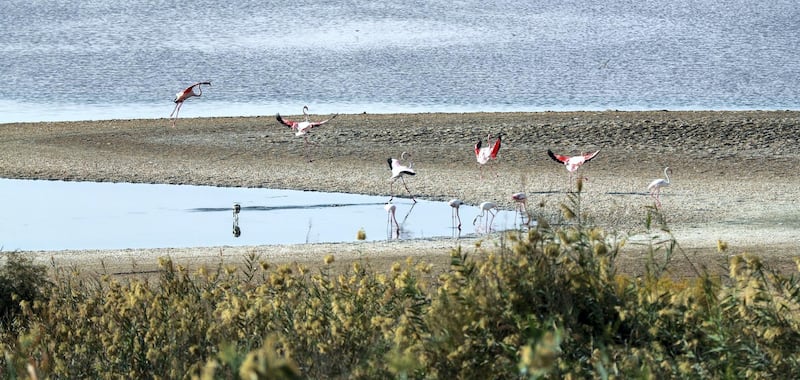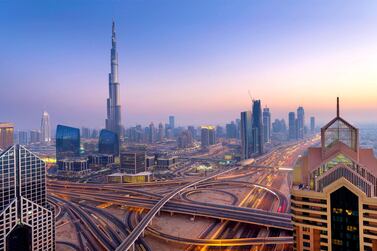Earlier this month, a gathering in Abu Dhabi of the world's elite in their field went under the radar of most residents in the UAE. At the four-day conference, sponsored by the Environment Agency – Abu Dhabi (EAD), more than 350 specialists in the conservation of the world’s endangered plants and wildlife gathered to discuss challenges in the struggle to preserve global biodiversity.
The event brought together members of the Species Survival Commission, a group of more than 8,000 expert volunteers from around the world, who come under the umbrella of the International Union for the Conservation of Nature (IUCN), the body that issues a "red list" of endangered species. So far, more than 105,000 species have been assessed, with a target of 160,000 set for the end of next year.
This red list classifies species on the basis of the following categories: not evaluated, data deficient, least concern, near-threatened, vulnerable, endangered, critically endangered, extinct in the wild and extinct. Through regular re-evaluation, individual species can then move from one category to another. Occasionally, their status can improve. The risk status of the scimitar-horned oryx, for example, native to the Sahel region of Africa, might shortly be downgraded from extinct in the wild to critically endangered, thanks to the success of a reintroduction programme organised by EAD in collaboration with a number of other organisations.
For the most part, however, the trend is downwards. More than 28,000 species assessed so far are thought to be threatened with extinction, including, remarkably, more than half the native trees of Europe. Only 14 American red wolves are believed to survive in the wild.
But I don't want to focus on threats to the world’s biodiversity; that is a never-ending conversation. Instead, it is worth focusing on ways in which the UAE's conservation bodies such as the EAD are now playing an increasingly important role on a global scale.
Their good work in the country is recognised by those in conservationist circles, although they could do with getting attention on a wider platform. Sharjah’s Environment and Protected Areas Authority, for example, is planning to introduce fines of up to AED50,000 for those dumping waste in what it describes as "wilderness" areas. I look forward to reading about the first culprits being caught.
In Abu Dhabi, the EAD has just announced the discovery of two new species of wasp, one at Al Wathba nature reserve and the other in Fujairah's Wadi Maidaq, while a new species of mammal for the UAE is thought to have been found in the Al Dhafra region – further evidence that there is still much to be discovered about the country's biodiversity.
Here in the Emirates, however, we hear little about what our environmental and conservation bodies do overseas. Besides the scimitar-horned oryx reintroduction programme in Chad, the EAD has also been active in Central Asia and Mongolia. Its global footprint is also strengthened by its support for the International Fund for Houbara Conservation based in Abu Dhabi, while it also contributes to the international Convention on Migratory Species with its work on migratory birds of prey and dugongs.
Last week’s IUCN meeting was the second such meeting sponsored by the EAD and followed an international conference on houbara conservation last year.
It is not just through the EAD, though, that the UAE’s outreach on conservation issues can be seen. The Mohamed bin Zayed Species Conservation Fund, which has been operating for more than a decade, has given more than 2,000 grants to research and conservation projects in 170 countries, involving more than 1,340 species or subspecies of a wide range of plants and animals. Many of these projects also receive support from other grant-giving bodies, helping to consolidate the fund’s international network. Its latest round of grants last month, totalling about $500,000, went to 59 projects in Europe, Africa, Asia, Oceania and North and South America, bringing the total distributed to date to more than $19 million.
A new Mohamed bin Zayed Raptor Conservation Fund, established last year, is now preparing a programme that will focus on tackling the global threat to birds of prey posed by electric power lines. Pilot studies in Mongolia have shown power lines kill hundreds of birds a year.
Replicating the EAD pattern of engaging not only at home but overseas, the Emirates Falconers’ Club has also become a leading participant in the International Association of Falconry and Conservation of Birds of Prey (IAF), with the club’s executive director Majid Al Mansouri currently serving as the IAF's president.
This is just a sample of the international work of our UAE conservation bodies. As I found during this month's conference, it is not surprising that that they have a good reputation globally. It is time that their contribution to the country’s international standing was more widely known at home.
Peter Hellyer is a consultant specialising in the UAE's history and culture






